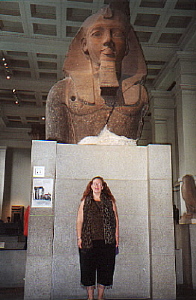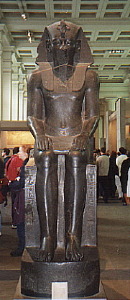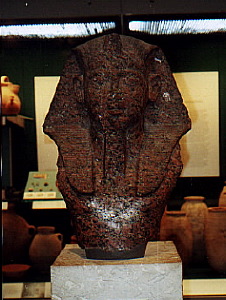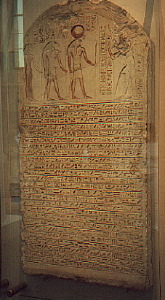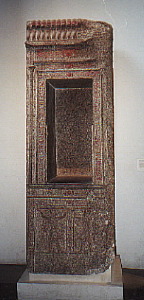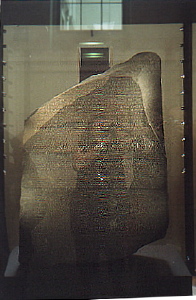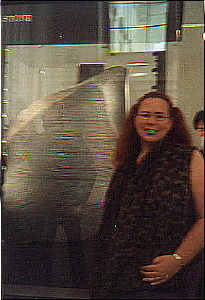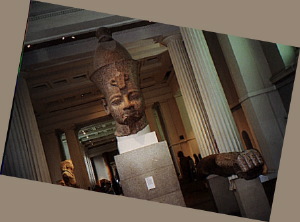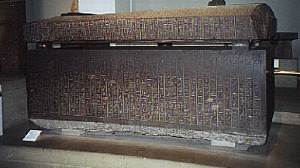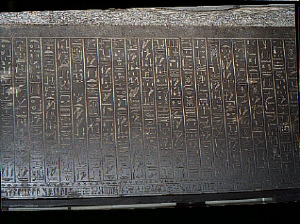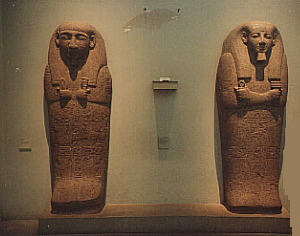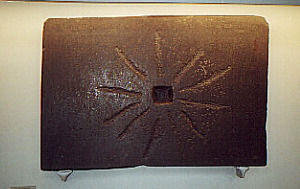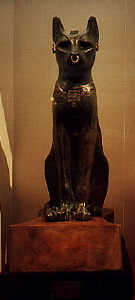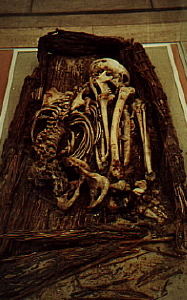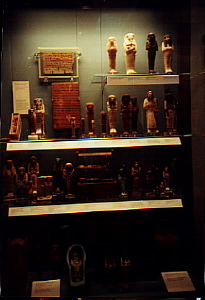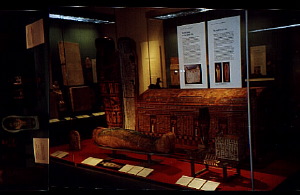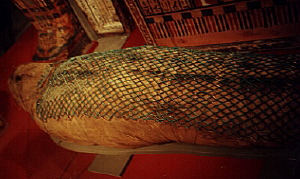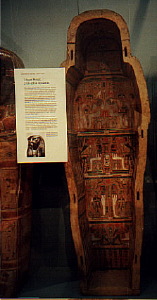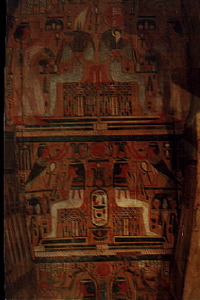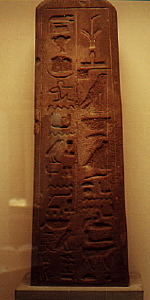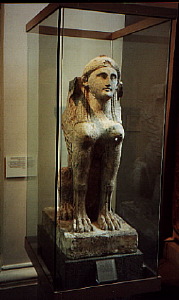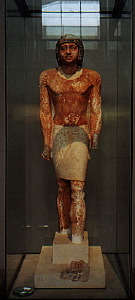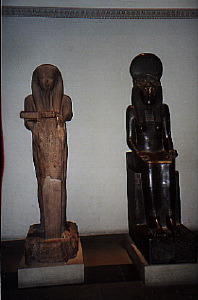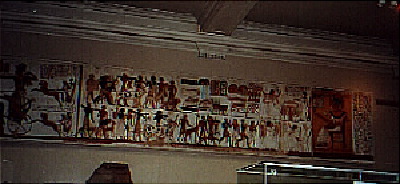|
|
|
this was where I spent the most time...ergo, there are the most pictures from this region
...makes you wonder how tall the whole thing was... ...if it was on top of this pedestal.... REEEEEAL tall
again, possibly Ramses II New Kingdom Pharaoh (possibly Ramses II), c. 1250 BCE (I think this might have been on the pedestal pictured above)
hieroglyph-inscribed headstone funerary stele of Cleopatra, with recess for statue I've waited 25 years to see this, and they had it behind glass....darn it!!
The Rosetta Stone (if you have to ask, see below....) Gilded inner-coffin of Henutmehyt, a priestess of Amun, during the reign of Ramses II (c. 1290 BCE) Red granite head and arm, statue of Amenophis III, c. 1390 BCE found at Karnak head is almost 10 feet high; arm is roughly 25 feet long Black basalt tomb, c. 250 BCE close-up of inscriptions random sarcophagi unnamed noble and his wife, carved in limestone c. 1325 BCE Sun carving from a wall, c. 1260 BCE Bronze "Gayer Anderson Cat", representing Bastet gold 'earrings' and silver 'necklace', showing the Eye of Horus...c. 600
BCE precursor to mummification---bones in a basket, c. 3250 BCE an array of Shabtis, figurines that were included in a sarcophagus, to do any work in the afterlife, in place of the deceased array of funerary articles, 19th dynasty, c. 1250 BCE close-up of mummy from left wooden coffin (and interior), Libyan period, c.1069-715
BCE Fairly well-endowed Sphinx 4 different reliefs of goddesses Standing tomb-statue of Nenkheftka, carved in limestone and painted, c. 2400
BCE Wall painting from the tomb of Nebamun, c. 1390 BCE
TheRosetta Stone (196BCE
) is a large hunk of black basalt, inscribed with a decree of Ptolemy V, in Egyptian (both hieroglyphic and demotic) and in Greek. It was with the help of the Greek version that scholars were able to decipher the Egyptian scripts; subsequent study of the Egyptian language and scripts made it possible for many other objects to be read and understood.
